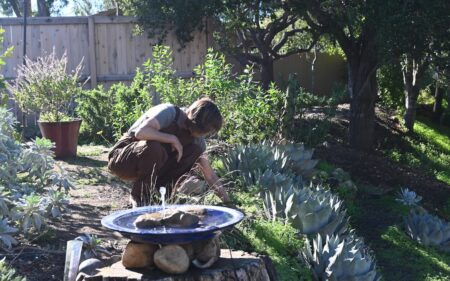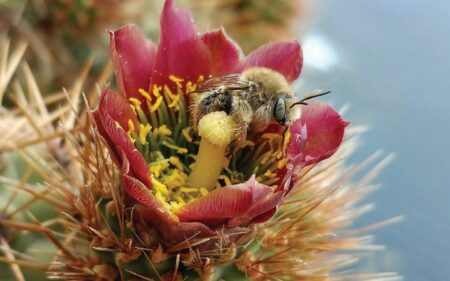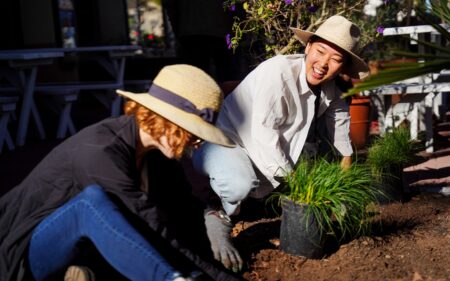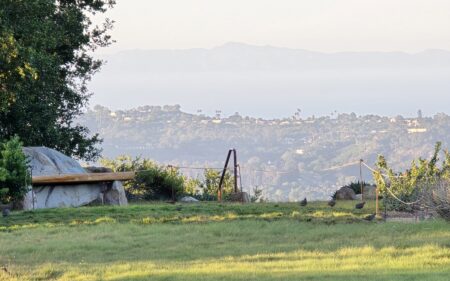Emerald Ash Borer | Detecting Early, Responding Rapidly
This summer, Santa Barbara Botanic Garden started work with CAL FIRE’s Forest Entomology and Pathology Program on an early detection initiative scouting for the presence of emerald ash borer (EAB) in our region. EAB is a non-native jewel beetle, originally from Northeast Asia, that was first detected in North America in 2002 in the vicinity of Detroit, Michigan, which has since spread rapidly to 35 states and 5 Canadian provinces. EAB are voracious feeders of ash (Fraxinus spp.), causing widespread destruction and death of native ash trees in introduced regions, while being considered minor pests in their native home range. California is home to five native species of ash, and the Garden presently has four species represented in our Living Collection. In addition to ashes, EAB is believed to infest other members of the olive family (Oleaceae), including olive trees, so the potential for tree losses in California is huge.
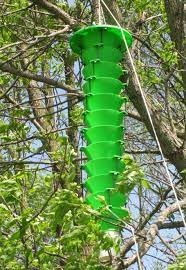
Here at the Garden, we are working with CAL FIRE to mount a funnel trap (pictured above) directly adjacent to a California ash (Fraxinus dipetala) tree located in the Arroyo Section. This funnel trap will be baited with leaf alcohol cis-3-Hexen-1-ol, a naturally occurring volatile oil found in ash leaves, that serves to attract EAB into the funnel trap where they are captured. In previous studies, the attractant, along with the green color of the trap, have demonstrated a good ability to capture EAB while limiting attraction and capture of other insect species. The traps will be checked by CAL FIRE staff periodically, and will only be installed during the months of peak adult beetle activity, approximately from May through August.
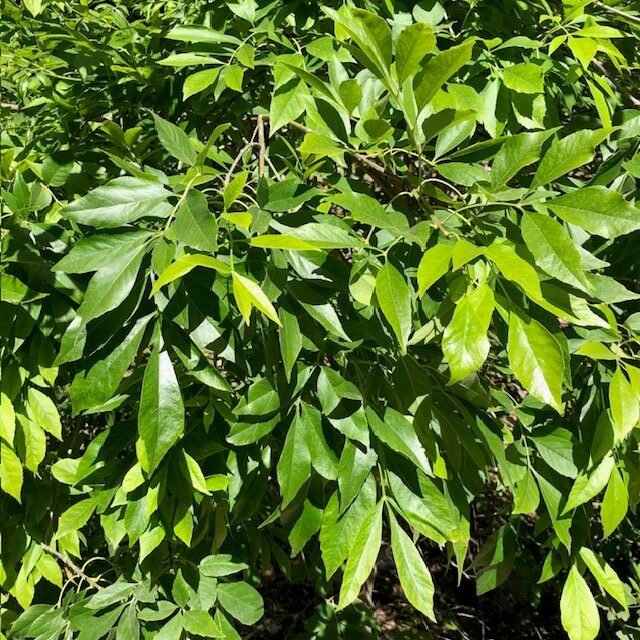

As of June 2024, EAB has not yet been detected in the state of California. Having stated that, EAB was discovered in Forest Grove, Oregon on June 30, 2022. This was the first detection on the west coast of the United States, so it’s thought to be a matter of time before it makes its way south to California. EAB has also established west to Colorado through its initial infestation in Michigan, spreading in all directions, south to the Gulf Coast, east to the Atlantic Ocean, and north into Canada.
What You Can Do
To prevent more rapid spreading of EAB, people should never transport ash firewood, since larvae and adult beetles could be present in dead material. All EAB insects detected should be reported to the California Department of Food and Agriculture Pest Hotline using 1-800-491-1899. Early detection and rapid response to non-native pests can provide valuable time to marshal resources from responding agencies to help get the word out to the public. This can potentially slow the spread of destruction by promoting preventative measures, such as identifying and treating localized trees and not transporting firewood to advance the spread of the pest to new locations. While we hope the Garden’s traps yield no EAB in the ensuing years, if and when they do, we will be sure to get the word out about this destructive pest. We’ll also be ready to help educate our visitors and the public so we can continue to monitor the effect they might have on the native ashes of California.
 Donate
Donate

